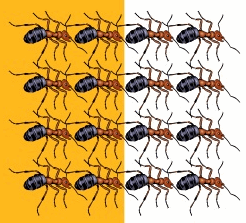
Research Topics
Ultra-Low-Voltage SRAMs
 Embedded memories are critical in processor design since they strongly impact the area, power consumption and performance of the system. The Angstrom architecture will utilize novel ultra-low-voltage SRAMs that are capable operating in the sub-threshold region, enabling greater voltage and frequency scaling for maximum energy savings. Investigators: Anantha Chandrakasan Jim Holt |
A hierarchical cache-coherency protocol with distributed discretionary directories and data
 Scalable
multicore systems require a cache-coherency scheme that can grow with
the system, yet is energy efficient and can adapt to many patterns of
system usage. The Distributed Discretionary Directories and Data (4D)
cache-coherency protocol is a fully distributed protocol for shared
caches organized in a tree-like hierarchy. 4D guarantees deadlock
freedom and sequential consistency (or other memory models) while
allowing each cache node to retain or discard directory information and
data at any time depending on the operating context. Investigators: Charles E. Leiserson |
The Zettabricks System
 Zettabricks is a novel language, compiler and runtime system that eliminates the programmer's burden of writing efficient parallel code targeted for a particular multi-core architecture. The system saves programmer effort and reduces the inefficiency of poorly targeted code allowing energy savings and better program performance. The programmer exposes algorithmic choices to the compiler via the Zettabricks language. The Zettabricks compiler and autotuner then exploit both offline and online machine learning techniques to compose a hybrid algorithm for optimal execution on a target architecture. Investigators: Saman Amarasinghe Una-May O'Reilly |
Self-Aware Factored Operating System (sefos)
 SEFOS is a new self-aware, factored OS designed from the ground up for scalability, dependability, and adaptability and is targeted at 1000+ core systems. It ties all of the other Angstrom hardware and software components together and helps address all four of the key extreme-scale challenges of programmability, scalability, dependability and cyber resilience, and energy efficiency. Investigators: Anant Agarwal Lamia Youseff |
Helper Threads
 Extreme-scale computers will contain 1000s of cores. Rather than run application threads on every available core, an alternate approach is to employ some cores that would otherwise be used inefficiently to run ``helper threads.'' Helper threads assist the application's compute threads in some way. One example use of helper threads is to trigger in advance long-latency cache misses or branch mispredictions that would normally stall compute threads, thus improving performance and power efficiency. Our research investigates how to construct helper threads, how to support them on extremely low-power cores (e.g., Angstrom's partner cores), and how to coordinate both compute and helper threads in 1000-core processors. Investigators: Donald Yeung |
The SEEC Framework and Decision Engine
 The SElf-awarE Computational model (SEEC) is designed to address the challenge of programming modern and future computer systems that must meet conflicting goals (e.g. high performance with low energy consumption). SEEC meets this challenge by allowing developers to collaboratively create adaptive systems that understand user’s goals and take action to maintain these goals in the face of unforeseen events such as hardware failure or variations in application workload. Investigators: Anant Agarwal Hank Hoffmann Jason Miller Jim Holt Srinivas Devadas |

